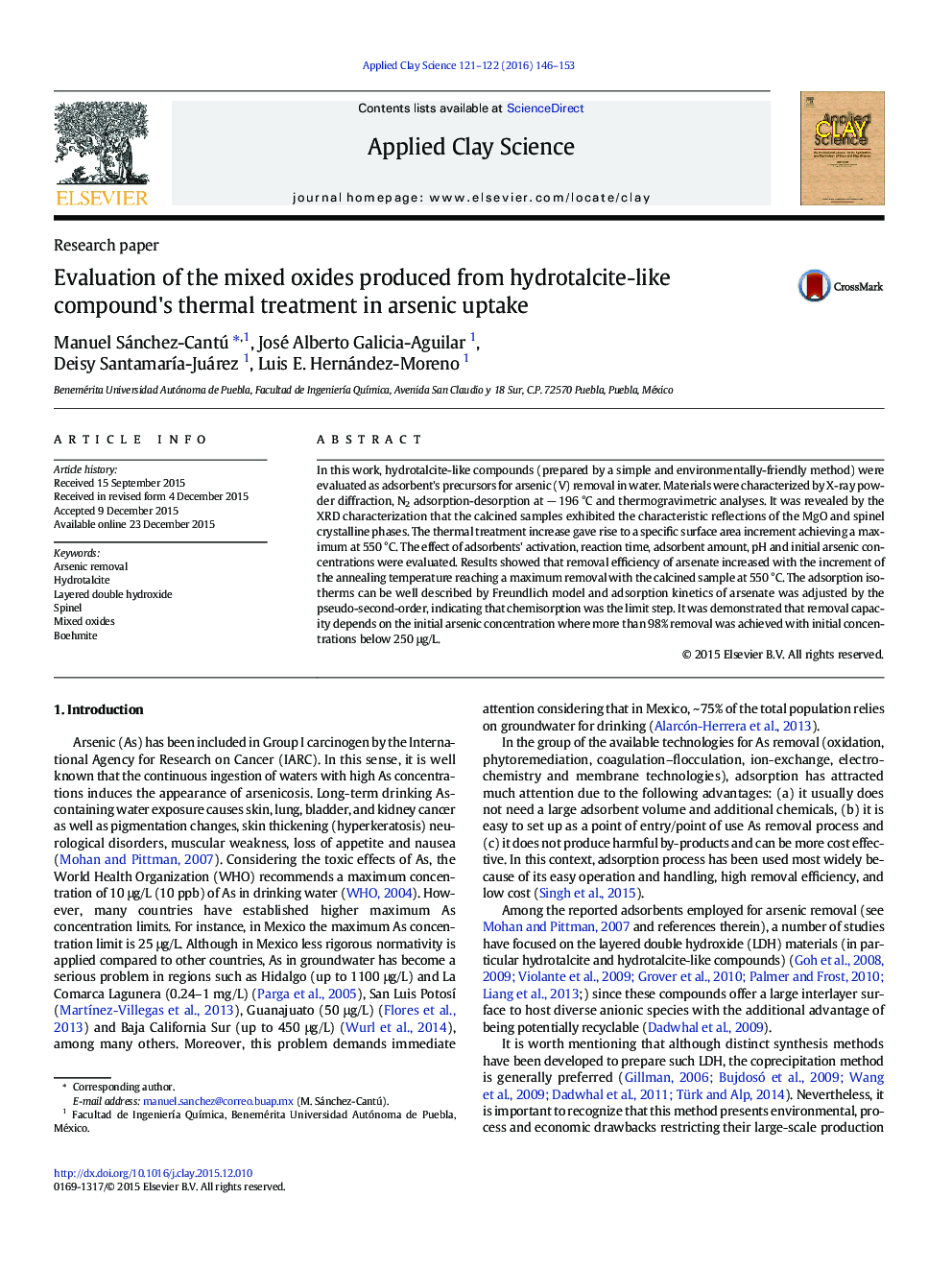| کد مقاله | کد نشریه | سال انتشار | مقاله انگلیسی | نسخه تمام متن |
|---|---|---|---|---|
| 1694202 | 1519062 | 2016 | 8 صفحه PDF | دانلود رایگان |
• Hydrotalcite-like compounds were prepared by a sustainable method.
• A mixture of nitrate-hydrotalcite and boehmite was obtained within 6 h at 80 °C.
• After annealing all calcined samples presented MgO and spinel crystalline phases.
• A maximum arsenate uptake was achieved with the calcined sample at 550 °C.
• More than 96% removal was achieved with initial concentrations below 250 ppb.
In this work, hydrotalcite-like compounds (prepared by a simple and environmentally-friendly method) were evaluated as adsorbent's precursors for arsenic (V) removal in water. Materials were characterized by X-ray powder diffraction, N2 adsorption-desorption at − 196 °C and thermogravimetric analyses. It was revealed by the XRD characterization that the calcined samples exhibited the characteristic reflections of the MgO and spinel crystalline phases. The thermal treatment increase gave rise to a specific surface area increment achieving a maximum at 550 °C. The effect of adsorbents' activation, reaction time, adsorbent amount, pH and initial arsenic concentrations were evaluated. Results showed that removal efficiency of arsenate increased with the increment of the annealing temperature reaching a maximum removal with the calcined sample at 550 °C. The adsorption isotherms can be well described by Freundlich model and adsorption kinetics of arsenate was adjusted by the pseudo-second-order, indicating that chemisorption was the limit step. It was demonstrated that removal capacity depends on the initial arsenic concentration where more than 98% removal was achieved with initial concentrations below 250 μg/L.
Figure optionsDownload as PowerPoint slide
Journal: Applied Clay Science - Volumes 121–122, March 2016, Pages 146–153
